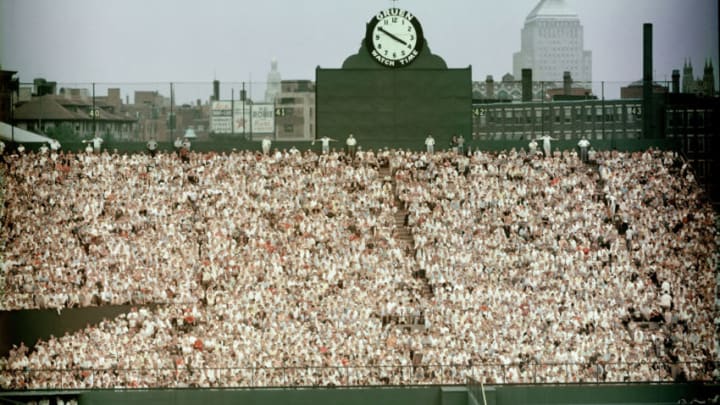A look at Red Sox outfielder Gary Geiger and a Houston connection
The Red Sox have had their share of players that became a focal point cursed with unfortunate luck. Christian Arroyo has taken on the regrettable role this season with untimely injuries and COVID that has impacted both the team and the young second baseman.
That brings to the memories plate a player from the distant Red Sox past – outfielder Gary Geiger. And in the spirit of fellowship at this most perilous time, there is a Houston connection. Albeit a very slight one. I will avoid any mention of Jeff Bagwell as the ALCS goes forward.
Geiger was a left-handed hitter and played predominately in center field. That was part of the issue. Geiger was a wisp of a player who usually lost battles with the walls throughout his career. In later years his actions would be classified as dirt dog quality or foolishness. Walls were not the only issue.
In 1957 Geiger broke in with Cleveland with a yawn. Just a .231 batting average and a meager one home run and six RBI in 91 games. Initially signed by the Cardinals, Geiger became a Rule-5 selection of the Indians. Boston then made a trade with Jim Piersall, heading to Cleveland for Geiger and slugger Vic Wertz.
That offseason, the 22-year-old had all his teeth extracted. Soft teeth made fillings an impossibility. Geiger also had an ulcer condition that periodically erupted. Even a collapsed lung is part of the litany of injuries. The game injuries were numerous and often the result of one-on-one ventures with walls – the walls invariably won.
Geiger and right field companion Jackie Jensen also had a common thread – a fear of flying that undoubtedly exasperated his ulcers. The Ulcers that forced a brief retirement in 1964.
The 1961 Red Sox was a wretched collection led by the ethically dysfunctional Pinky Higgins but had a few noteworthy players. Carl Yastrzemski was a rookie replacing the legend Ted Williams in left field. Righty Don Schwall was the American League Rookie of the Year, and Geiger led the team with 18 home runs. A promise for the future?
Geiger’s career never took hold. Injuries, a dismal batting average, and a team desperate for an offensive upgrade finished Geiger in Boston. Stays with Atlanta and Houston accomplished nothing but the accumulation of service time. In Houston, Geiger hit a paltry .225 over 160 games.
Geiger retired with a .246 career batting average over 12 seasons and lived a contented retirement until a kidney ailment took his life at age 59. A player who, despite dire circumstances, never complained about a bad hand being dealt to him.
The memory I have of Geiger is his swing. Like Andrew Benintendi, he had a smooth swing, and the flaw was lefties. Geiger had as much success with lefties as I would attempt to understand quantum physics. Where Geiger made up for his hitting was his glove work. Of course, replacing Piersall would make any defensive work questionable, but he had great instincts and an excellent arm.
I had (obviously) a fondness for Geiger, and some of it most certainly was his grittiness. Geiger is a lost article to most Red Sox fans, but I have a world of respect for what he overcame.
Sources: SABR, Baseball-Reference
